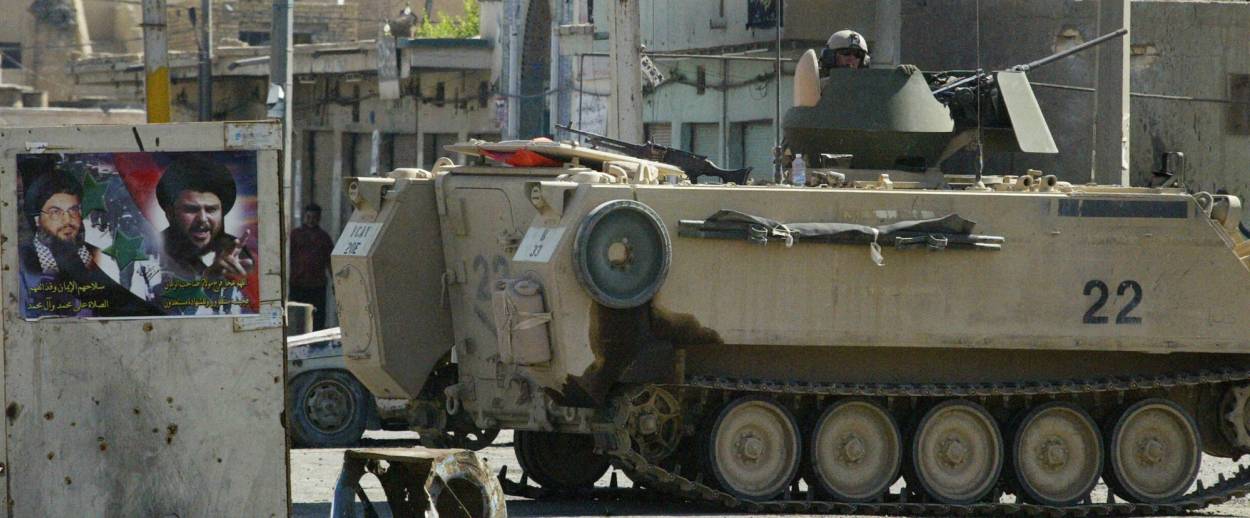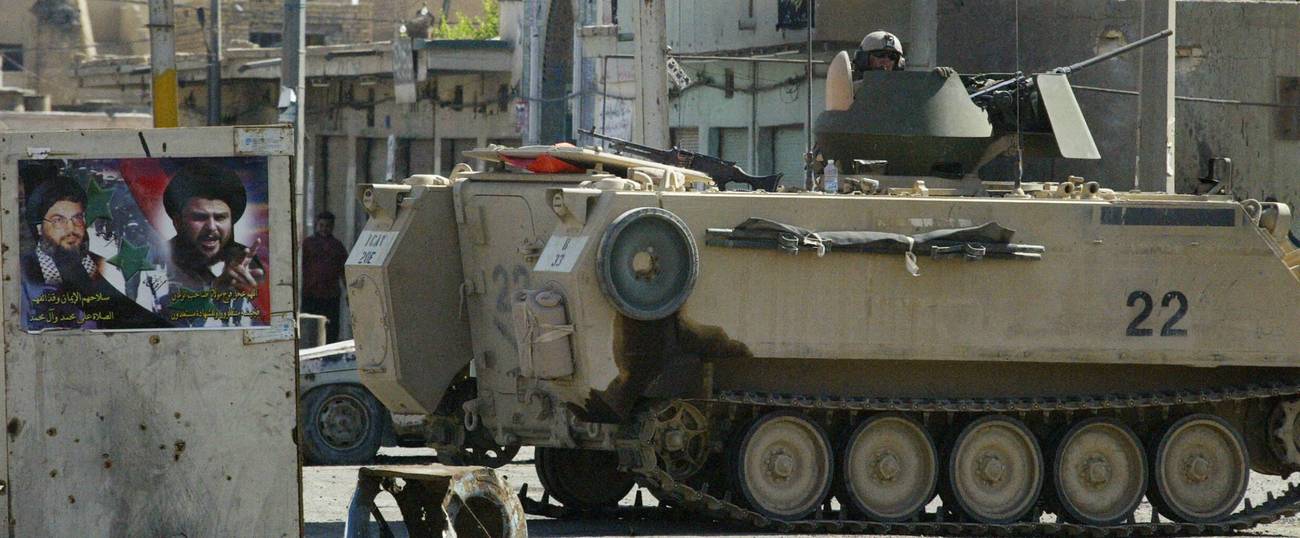The Pentagon Fills Hezbollah’s Shopping List
Bradley fighting vehicles, M4 rifles among the American goods that will soon make their way to Lebanon, free of charge




In recent years, federal law enforcement agencies have repeatedly arrested Hezbollah operatives in the US who were trying to procure weapons and other combat-related equipment for the group. Those arrests have given US law enforcement a pretty clear idea of the specific items on Hezbollah’s wish-list – advanced rifles, night goggles, specialized communications gear and so forth. Hezbollah might also have wished that its agents had succeeded in their clandestine buying missions instead of being busted and going to prison. Yet even in the fever-dreams of Hezbollah’s bunker-bound leader, Hassan Nasrallah, it seems unlikely that anyone in the group imagined that the Pentagon would simply ship the advanced American gear they sought to obtain to Lebanon, gratis.
But on Monday, US Ambassador to Lebanon Elizabeth Richard revealed that the Pentagon has done exactly that – or near enough to make Hassan Nasrallah jump for joy inside his bunker. In remarks delivered at the Port of Beirut, Ambassador Richard reviewed the material contents of a $100 million contribution that the US is making to the Lebanese Armed Forces (LAF), which last month provided support to Hezbollah in a joint military operation in northeastern Lebanon. Hailing the first eight of a promised thirty-two M2A2 Bradley Fighting Vehicles that the US will be delivering to the LAF, Richard reviewed the items the US has delivered to the LAF over the past 12 months. Along with heavier weapons, Richard revealed, the list includes “4,000 M4 rifles,” “320 night vision devices and thermal sights,” and “360 secure communication radios.”
Why is this noteworthy? Well, as it happens, these precise items have been on Hezbollah’s shopping list consistently for almost a decade.
In 2009, Hezbollah official Hassan Hodroj and his son-in-law Dib Harb were indicted in Pennsylvania where they sought to purchase 1,200 Colt M4 Carbines and to ship them from the US to the port of Latakia in Syria. Harb, the indictment revealed, had told the cooperating witness in the case that a Hezbollah official had called him from Iran “and emphasized the need for quick delivery” of the rifles.
That same year, as part of this effort, procurement agent Dani Tarraf was also arrested and indicted with his associates for trying to procure weapons and other equipment for Hezbollah. Tarraf had approached an undercover law enforcement officer to get shoulder-fired missiles and 10,000 Colt M4 Carbines, which he also intended to ship to the port of Latakia. In addition, Tarraf handed the undercover officer product specifications for third-generation night-vision camera lenses, low-light video cameras, and thermal imaging devices. Tarraf and his associates also wanted the undercover officer to provide them with “500 military radios” — not any radios, but a sophisticated model “capable of exchanging communications between radio frequencies and fiber-optic networks” – for shipment to Beirut international airport.
Around the same time, Patrick Daniel Nayyar was arrested in Queens and charged with attempting to provide material support to Hezbollah. Nayyar told the FBI informant he thought was a go-between to the group, that he and his co-conspirator could provide Hezbollah with “sniper rifles and night vision goggles,” among other items.
More recently, in October 2015, Iman Kobeissi was arrested in Atlanta and arraigned at the federal courthouse in Brooklyn on money laundering conspiracy charges and unlicensed firearms dealing conspiracy. Kobeissi had presented an undercover DEA agent with a list of weapons for her associates in Iran and for Hezbollah in Lebanon. The list for her Iran-based customer included an order for 250 M200 sniper rifles and 500 M4 Carbine rifles.
Proponents of supporting the LAF in Washington have long defended the policy of arming the Lebanese army—which Hezbollah now controls politically—with two ready ripostes. First, they point out how the LAF has a perfect record of not transferring US-origin equipment directly to Hezbollah. They also go one step further and claim that the critics’ concerns are baseless, since Hezbollah wouldn’t want any of the equipment the US gives the LAF anyway.
At a congressional hearing in June, a former Defense Department official who has worked closely on Lebanon and on the LAF policy, articulated this conventional wisdom: “Hizballah doesn’t need the Lebanese military’s assets. The weapons it receives from Iran via Syria are substantially more sophisticated than any materiel that the United States has given Lebanon’s military to date.”
It should be clear now that this claim is simply false. At least three items in the US aid package to the LAF have been high up on Hezbollah’s arms shopping list for close to a decade.
Imagining that the LAF will continue to refrain from passing on equipment in the future—now that Hezbollah controls the Lebanese state, and is clearly the strongest military force in Lebanon—takes a lot of faith. It’s also irrelevant.
Let’s leave aside the fact that the LAF assisted Hezbollah in 2006 in nearly sinking an Israeli warship, and that LAF snipers twice in 2010 and 2013 shot at and killed Israeli soldiers across the border. And let’s not get into the controversy over whether the US-origin armed personnel carriers that Hezbollah paraded in Syria last year came directly from the LAF—or whether the LAF simply secured Hezbollah’s logistical lines and waved them across as they moved heavy equipment into Syria. The bottom line is current US policy is feeding an army that operates in a political configuration entirely dominated and directed by Hezbollah and its commanders in Iran.
What matters, in other words, is the address on the Pentagon’s new package of military goodies—not the name of the addressee.
Tony Badran is Tablet’s news editor and Levant analyst.